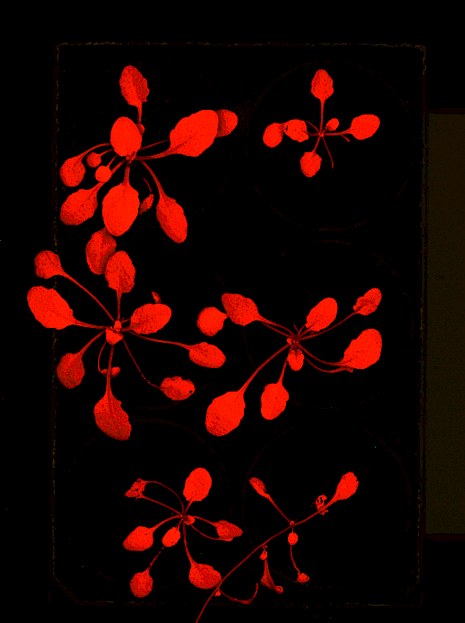Upon illumination, green plants emit red to far red fluorescence deriving from chlorophyll. Depending on pigment content or environmental circumstances, fluorescence in additional wavelength ranges, e.g. yellow, may occur. Fluorescence ratios can be used to monitor environmental changes and thus enable early stress and strain detection.
Detecting pigment-specific fluorescence may require sample-adapted excitation light and filters. Once more than one fluorescent pigment is present in a sample, the camera records only that type of fluorescence that is excited by the imposed light and that can pass the corresponding filter. Thus, proper selection of light type and filter is essential to successfully measure fluorescence light resulting from a particular pigment.
In some experimental situations, fluorescent biomarkers are recorded, using appropriate excitation light and filters, to evaluate spatial occurrence and amount of biomarker in the sample. Particularly in whole-plant images, the biomarker-imaging only works if the fluorescence intensity exceeds the camera sensitivity.

